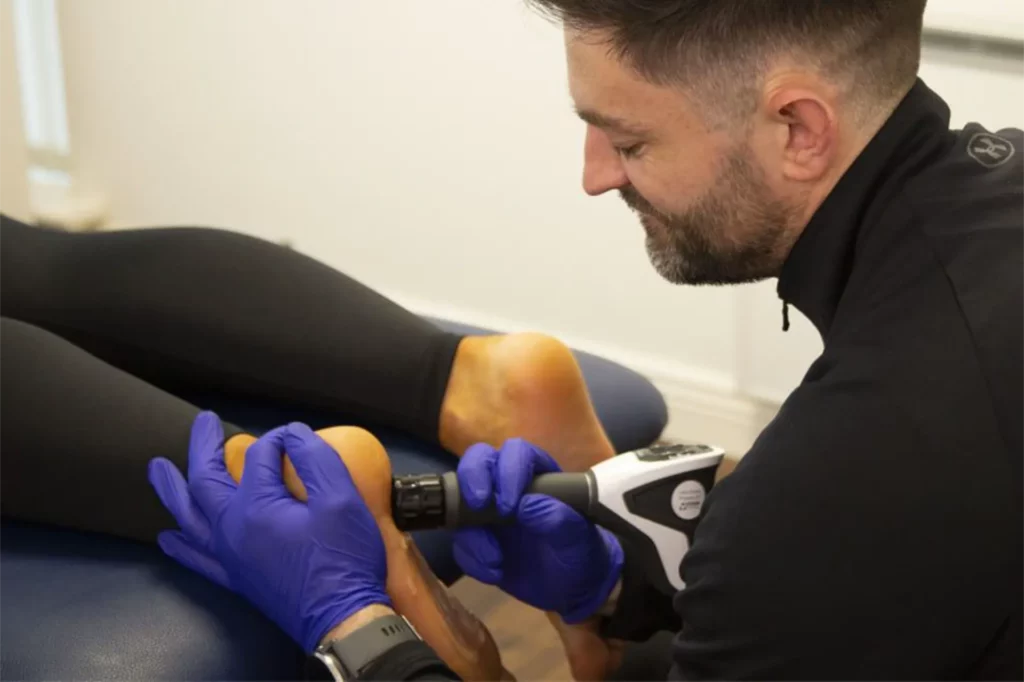Below is a Shockwave Therapy case study of a typical patient that found relief from this treatment.
This is an average case of plantar fascia pain
Background of Pain
Mrs P is a 46 year old female office worker who enjoys running in the evenings and going for walks with family and friends in the park. 6 months ago she started to notice a niggle in her heel, which was very painful getting up in the morning but then loosened out over in under 30 mins.
Aggravating factors
- Walking 45-60 mins
- After sitting for long periods
- Flat shoes
- Standing for long periods
Physiotherapy
Mrs P attended a physiotherapy clinic who released some muscles in the back of her leg and provided some stretching exercises. This helped for a short period but did not resolve her pain.
At this stage, she felt there was no cure for it and tried to continue her life
After 6 months she got fed up and began looking for an alternative treatment.
Mr P came to my clinic and after an assessment, I found that she had a chronic case of plantar fascilitis. She was weak in her calf muscles and hip muscles which was overloading the plantar fascia in her foot as she walked.
While the stretching exercises did help they did not resolve the weakness in her hip and calf.
Initial treatment
The aim of the initial treatment is to get the sharp acute pain under control by means of shockwave and some stretching and strengthening exercises to be done every second day. Advice was provided to wear appropriate footwear when walking during the day. If she begins to get sore walking- note how long she had been walking for. We then use this a marker or baseline to show improvement
Second Session
Mrs P’s next session was 7 days later Mr P reported a 50% reduced in pain in the morning but still had pain walking after 40 mins.
Shockwave was repeated and bodyweight exercises were progressed to more difficult exercises to further strengthen the foot. These were again repeated every 2 days.

Third Session
Mr P noticed a further 10% reduction in pain in the am, following the second session treatment of Shockwave and is glad she is seeing progress. She can now walk 55 mins until the onset of pain.
Mr P was now asked to complete exercises holding weights in hand to further increase the strength in the foot.
She is beginning to feel strong in the foot and lower leg.
The physiotherapist followed up with Mrs P after 2 weeks and she reported that she was 75% improved after 3 weeks of physiotherapy.
It was decided to do a fourth and final shockwave session that week and progress exercises to some gentle hopping on both feet and then onto one foot, to mimic running.
8 weeks after treatment began Mr P is 90% improved, has no pain in the morning, can walk for 90 mins with no pain and can run for 20 mins with no pain.
Number of session = 4
Length pain = 6 months
Time to full recovery = 10 weeks
Compared to our competitors
Diarmuid Hegarty
Clinical Director

